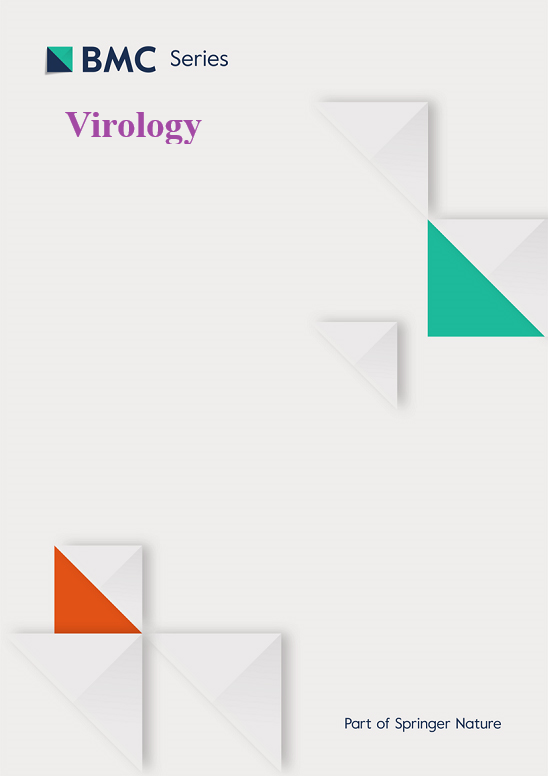现代复制酶和古真核生物引物的进化景观可能有巨大的病毒干预
IF 2.8
3区 医学
Q3 VIROLOGY
引用次数: 0
摘要
来自核细胞病毒门的病毒一直是研究病毒进化的核心部分,因为它们具有非典型的大颗粒大小和大DNA基因组,编码用于蛋白质翻译、代谢、DNA复制和修复的orf。棘阿米巴多食迷你病毒(Acanthamoeba polyhaga mimivirus, APMV)是该门的创始成员,它编码一种dna修复多功能PrimPol酶,属于古真核启动酶(archaeo-eukaryotic primase, AEP)超家族。AEPs是存在于所有生命形式和病毒域中的酶,它们的多用途性质被假设在进化过程中有助于基因组复制和修复。AEPs广泛的底物特异性使其可以作为引物酶、聚合酶和翻译合成聚合酶(TLS)。这种多操作模式使它们成为一种原始酶的潜在候选者,这种酶可能是仍然低效的古代复制机制的一部分。在本文中,我们利用现有的aep序列、生化和结构信息,探索现代复制酶的潜在起源。在这种情况下,我们认为aep,特别是primpol,是现代复制机制开始的核心。以APMV PrimPol为代表,我们提出了一个裸DNA元件、早期病毒、细胞生物和复制机制可能发生平行进化的模型。本文章由计算机程序翻译,如有差异,请以英文原文为准。
The evolutionary landscape of modern-day replicases and archaeo-eukaryotic primases may have giant viral interventions
The viruses from the phylum Nucleocytoviricota have been a central part of the investigation to understand the evolution of viruses because of their atypically large particle size and large DNA genome encoding ORFs for protein translation, metabolism, and DNA replication and repair. Acanthamoeba polyphaga mimivirus (APMV), the founding member of the phylum, encodes a DNA-repair multifunctional PrimPol enzyme belonging to the archaeo-eukaryotic primase (AEP) superfamily. AEPs are enzymes present in all domains of life forms and viruses, and their versatile nature has been hypothesized to have aided in genomic replication and repair during evolution. The broad substrate specificity of AEPs allows them to act as primase, polymerase, and translesion synthesis polymerase (TLS). This multi-operational mode makes them a potential candidate for a primordial enzyme that could have been a part of the still inefficient ancient replication machinery. In this article, using the available sequence, biochemical, and structural information of AEPs, we explore the potential origins of modern-day replicases. In this context, we propose that AEPs, specifically PrimPols, have been central to the inception of modern-day replication machinery. Using APMV PrimPol as a representative candidate, we propose a model in which the parallel evolution of naked DNA elements, early viruses, cellular organisms, and the replication machinery might have occurred.
求助全文
通过发布文献求助,成功后即可免费获取论文全文。
去求助
来源期刊

Virology
医学-病毒学
CiteScore
6.00
自引率
0.00%
发文量
157
审稿时长
50 days
期刊介绍:
Launched in 1955, Virology is a broad and inclusive journal that welcomes submissions on all aspects of virology including plant, animal, microbial and human viruses. The journal publishes basic research as well as pre-clinical and clinical studies of vaccines, anti-viral drugs and their development, anti-viral therapies, and computational studies of virus infections. Any submission that is of broad interest to the community of virologists/vaccinologists and reporting scientifically accurate and valuable research will be considered for publication, including negative findings and multidisciplinary work.Virology is open to reviews, research manuscripts, short communication, registered reports as well as follow-up manuscripts.
 求助内容:
求助内容: 应助结果提醒方式:
应助结果提醒方式:


